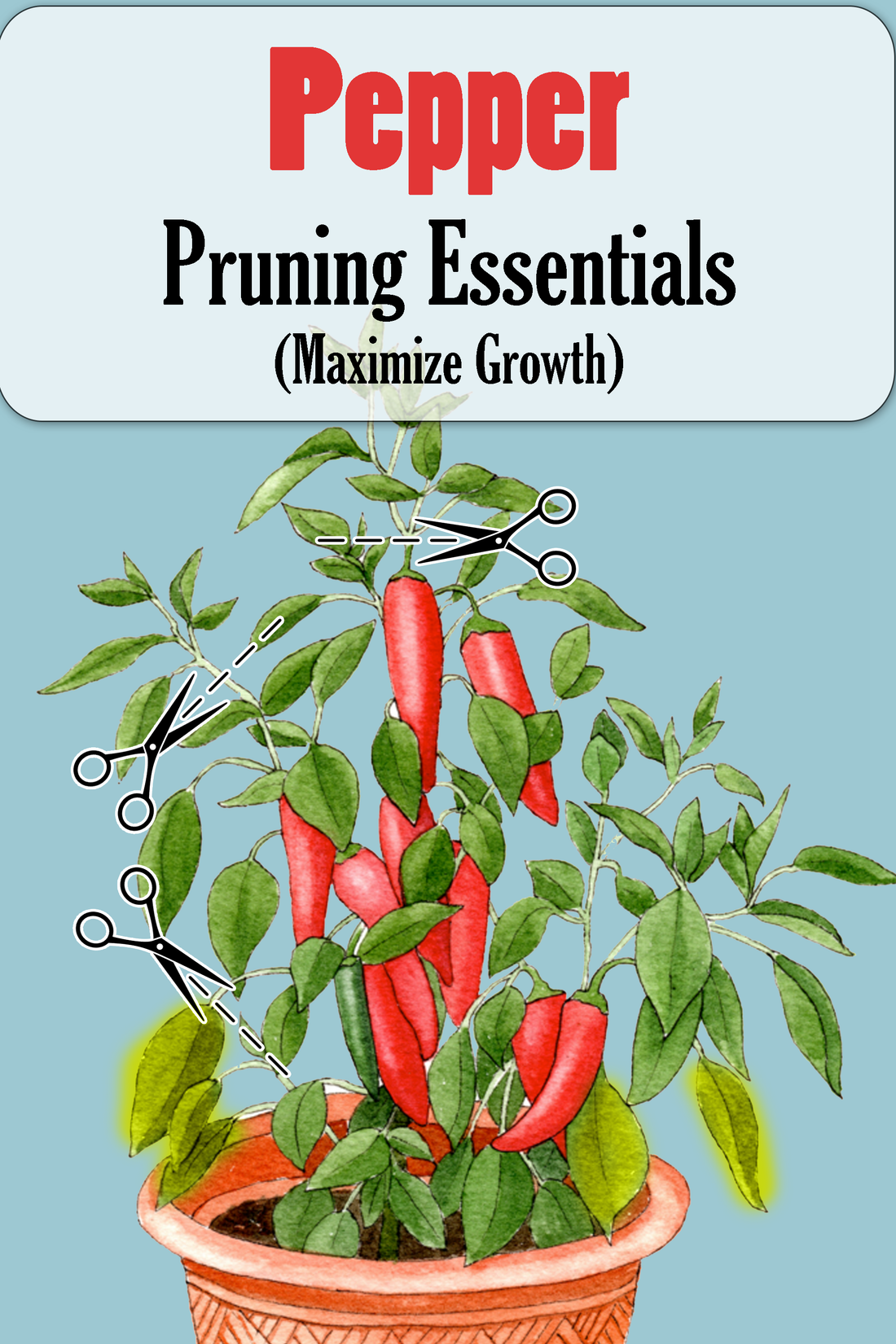When to Prune Your Pepper Plants
There are two main schools of thought: early and late-season pruning.
Early season pruning is usually considered the most impactful type of pruning. Often called 'topping' a pepper. When you cut the top portion of your young seedling to stimulate bushier plant growth. Topping works best on young healthy peppers, make sure your plants get large enough to top, check out our growing guide!
Late season pruning involves pruning old and damaged leaves, along with others to reduce energy use in the plant and help ripen peppers. Late Season pruning can also take place as a way to prepare your plants for overwintering.
Topping Off Peppers
A popular way to prune peppers is to cut the top of your seedling off. This forces energy to the lower branches allowing your plant to grow bushier. Usually done to seedlings once they reach around 6 inches tall.Should I Top my Peppers?
You will find gardeners argue both in favour and against topping pepper plants. Those in favour of topping argue it helps produce higher yields and gives it a nicer look. While those against, argue leaving your pepper to grow on its own un-interfered will produce the best yields.
In reality, it is a mixed bag here, in the past I have topped my peppers and noticed a significantly bushier plant. However it is now becoming clear amongst pepper growers that the main benefit to topping is NOT an increased yield. Topping your plants is a great way to grow healthy plants indoors where vertical spacing is limited. As well it provides an aesthetically pleasing pepper that is very dense and can easily support its own weight.
Through multiple tests and trail and error it is clear that in order to receive the highest yield of peppers. It may be best to let the plant grow freely. For most home gardeners though, this will not be a significantly noticeable difference either way.
Although it all comes down to personal preference. Your plants will still produce peppers either way.
You want to identify a node near the top of the plant and cut the main stem 1 inch above that node. Make sure to cut on a slight angle for water to run off.
By cutting off the top this allows plants to focus on horizontal growth via the growth in the center of each branch/fork. In about 2 weeks your pepper should be noticeably bushier with lots of new growth developing. Your peppers will be bushier and denser allowing them to stay more balanced in high winds and storms.

Mid Season Pruning
I have yet to mention mid-season pruning as it does not have as large of an effect on pepper growth compared to pruning early or late in the season, but I believe it is still an important part of growing your peppers. Mid-season pruning encompasses pruning sick or yellowed leaves from your plant, as well as any aesthetic pruning.Aesthetic pruning is simply maintaining your pepper plant, similar to giving it a haircut. Preventing it from shading smaller plants, growing outside of the garden, and a variety of other reasons. To most gardeners, this isn’t a typical step in the gardening process, but can be important to some in order to maintain a balanced and healthy pepper plant.

Pruning off yellow and dying leaves helps to prevent pests and disease from spreading within your plant. Most often pepper leaves turn yellow from over/ under-watering so it is important to make a mental note of the plants' overall health before pruning. Cutting these leaves off helps clean up the plant and allows you to monitor any new spreading damage and deal with it accordingly. I personally check my peppers often and monitor any new yellowed leaves that have developed after a thorough pruning.
Late Season Pruning
This comes in the form of heavy pruning towards the last month of the season. Some gardeners prune off a majority of the leaves on their plant in order to speed up the ripening of fruit.However, this is not entirely necessary as most peppers will ripen off the vine perfectly fine with no noticeable taste change.
I personally like to use the method of taking 1 or 2 ripe tomatoes and placing them in a paper bag with your un-ripe peppers. The ripe tomatoes produce a chemical called Ethylene 1 that helps to ripen the peppers. Within a few days, you will notice all your peppers have ripened and can be used or stored appropriately.
Over Wintering Plants
If you live somewhere where the winter conditions drop below 60 degrees Fahrenheit (or 16 degrees Celsius), but you want to save the Pepper Plants you’ve worked so hard for all year. You can 'over-winter' your peppers. Overwintering is a process of extreme pruning where you save the plant and store it indoors so it may grow again next year.On top of being able to keep your favourite plants, overwintered peppers consistently produce higher yielding crops the second and third years they grow. To over winter your peppers they MUST be planted in containers so you can bring them inside.

Three overwintered peppers slowly regrowing
The pruning involves cutting back the plant to about 1 ft and leaving only a few main Y branches on the plant. Meaning a few main branching nodes. The leaves will fall off naturally and is no cause for concern as it enters a hibernation state. Then, the plant is left in a slightly cool area with a mild amount of light. More tips on overwintering can be found online or in one of my other articles.
So What Choice Is Best?
In the end, there is no critical need to prune your peppers. If left un-pruned you will still have healthy happy plants. Some will argue pruning doesn't positively or negatively affect yields and is done more to help shape your plants. I personally would recommend topping your peppers as it helps them to grow bushier, and is easier to harvest and maintain. I would not recommend pruning heavily near the end of the season , as I feel it does not significantly improve your yield, however, new growth may be pruned to prevent energy going towards making new peppers too late in the season.
What do you think of our tips?
Are you topping your peppers this year?
Let us know down below in the comments, or get in contact with us on Instagram @RedHotSeeds

